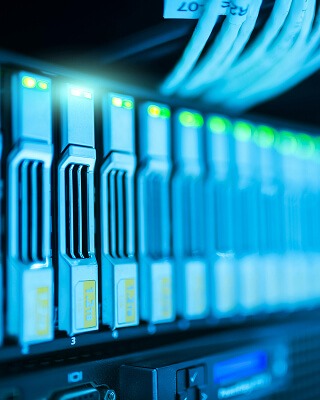Desalination
Introduction to Industry
The desalination industry has expanded significantly in recent years, driven by rising water scarcity, urban growth, and industrial demand. R&D efforts have increasingly focused on making desalination more energy-efficient, cost-effective, and environmentally sustainable. Key advancements include the development of more durable, fouling-resistant membranes, as well as the integration of renewable energy sources to reduce the carbon footprint of large-scale plants. Pretreatment has become a major area of innovation, with electrochemical technologies like electrocoagulation, gaining traction for their ability to reduce fouling, extend membrane life, and cut chemical use. At the same time, there is growing interest in modular and decentralized desalination units, offering flexible solutions for remote, industrial, or rapidly growing regions. These trends reflect the industry’s shift toward smarter, more resilient water treatment technologies that can meet both environmental and operational demands.
Current Challenges
Despite its potential to provide a reliable source of freshwater, desalination faces several challenges. One of the primary challenges is its high energy consumption, which can result in high operational costs and greenhouse gas emissions. The use of fossil fuels to power desalination plants also contributes to climate change. Additionally, the brine and other waste products generated during the desalination process can have a negative impact on marine ecosystems if not properly managed. Another challenge is the high capital costs of building and maintaining desalination infrastructure. This can make it difficult for lower-income communities and countries to adopt the technology.
Furthermore, desalination can be vulnerable to natural disasters, such as hurricanes or earthquakes, which can damage or disrupt the operations of desalination plants. These challenges underscore the need for continued research and development of new desalination technologies that are more energy-efficient, cost-effective, and environmentally sustainable.
What's Being Done Now?
What Hydroleap Brings to the Sector
Introduction to Industry
The desalination industry has expanded significantly in recent years, driven by rising water scarcity, urban growth, and industrial demand. R&D efforts have increasingly focused on making desalination more energy-efficient, cost-effective, and environmentally sustainable. Key advancements include the development of more durable, fouling-resistant membranes, as well as the integration of renewable energy sources to reduce the carbon footprint of large-scale plants. Pretreatment has become a major area of innovation, with electrochemical technologies like electrocoagulation, gaining traction for their ability to reduce fouling, extend membrane life, and cut chemical use. At the same time, there is growing interest in modular and decentralized desalination units, offering flexible solutions for remote, industrial, or rapidly growing regions. These trends reflect the industry’s shift toward smarter, more resilient water treatment technologies that can meet both environmental and operational demands.
Current Challenges
Despite its potential to provide a reliable source of freshwater, desalination faces several challenges. One of the primary challenges is its high energy consumption, which can result in high operational costs and greenhouse gas emissions. The use of fossil fuels to power desalination plants also contributes to climate change. Additionally, the brine and other waste products generated during the desalination process can have a negative impact on marine ecosystems if not properly managed. Another challenge is the high capital costs of building and maintaining desalination infrastructure. This can make it difficult for lower-income communities and countries to adopt the technology.
Furthermore, desalination can be vulnerable to natural disasters, such as hurricanes or earthquakes, which can damage or disrupt the operations of desalination plants. These challenges underscore the need for continued research and development of new desalination technologies that are more energy-efficient, cost-effective, and environmentally sustainable.






